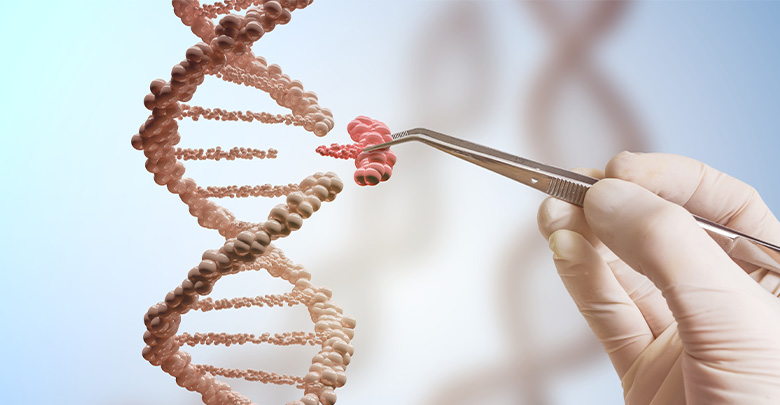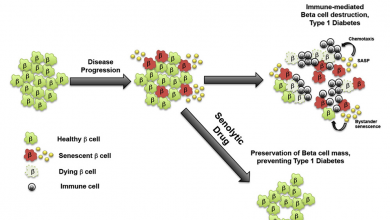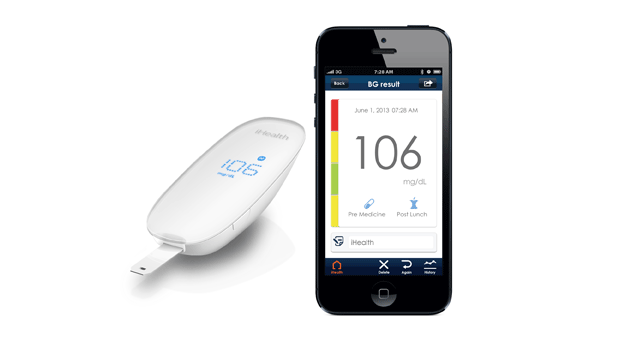Deleting Gene in Mice Prevents T1D from Developing
Interview with Feyza Engin, lead author, about her study and what promises it holds for preventing type 1 diabetes in humans

Researchers at the University of Wisconsin-Madison made a surprising discovery recently when they deleted the IRE1-alpha gene in mice destined to develop type 1 diabetes.
Deleting this gene caused the beta cells in the mice to de-differentiate or revert to an earlier, less specific functional stage. After a short period of hyperglycemia, these beta cells re-differentiated back into healthy, insulin-producing, mature cells.
Surprisingly, this short reversal in function was enough to prevent immune activation against the cells, thereby preventing autoimmune diabetes from ever developing.
I spoke with Assistant Professor Feyza Engin, the lead author of the study, which was published in Cell Metabolism, and ask her some more in-depth questions about this research.
IN: Your team first expected that deleting this gene would expedite the development of type 1 diabetes, not cure or prevent it. Can you talk about your expectations going into the study and what it was like to stumble upon a finding like this?
Feyza Engin: We previously published a study where we showed that endoplasmic reticulum (ER) stress and defective unfolded protein response (UPR) existed in pancreatic beta cells of 2 mouse models of type 1 diabetes (T1D) as well as human patients. Treating these mice with a compound called TUDCA mitigated ER stress and prevented T1D. TUDCA is now in Phase I clinical trials for the treatment of T1D.
Building on this study, we hypothesized that targeting the UPR could affect the disease progression. We initially predicted that deleting a key UPR gene would accelerate the disease.
Thus, when we observed that IRE1 deleted mice were developing hyperglycemia following weaning (3- 4 weeks of age), we thought we were right in our initial hypothesis, but surprisingly almost all of these mice started to recover from the hyperglycemia.
Then, our next prediction was that they would still get attacked by immune cells.
However, even after almost a year of monitoring these mice were still normoglycemic and healthy. At that point, we knew that understanding the mechanisms of this phenomenon would lead to an important discovery.
IN: Did the effects of the genetic modulation last for the entire lives of the mice? Would you expect to see a similar manipulation prevent diabetes in humans using this method?
Feyza Engin: IRE1 deficient mice were normoglycemic for up to 50 weeks of age which roughly corresponds to 40-50 years of age in humans. After this point, we ended monitoring these mice.
It needs to be tested in a clinical setting whether deleting a single gene from the beta cells of high-risk individuals could lead to a similar protective effect in humans.
However, we know that a cancer drug, Gleevec, is currently under Phase II clinical trials for the treatment of new-onset T1D patients. Interestingly, studies showed that Gleevec exerts its anti-diabetic effects via inhibiting IRE1.
IN: How long did the hyperglycemia phase last in mice? How long would you expect it to last in humans?
Feyza Engin: The duration of hyperglycemia showed variations in mice, but roughly they were hyperglycemic for about 3-4 weeks. It is hard to predict if the deletion of IRE1 in humans will lead to hyperglycemia as most likely this would depend on when, where, and how it will be inhibited, hence making a duration conversion from mouse to human would be difficult.
IN: Can you explain the process by which the deletion of the target gene is carried out? Would you expect a similar method to be used in humans if this is found to be useful?
Feyza Engin: Since we aimed to delete IRE1 before pancreatic islets were infiltrated by immune cells, we targeted IRE1 deletion in mice early in their life. We injected lactating dams with a drug called tamoxifen. Tamoxifen triggers the deletion of IRE1 in beta cells in pups. While this system worked very well in mice, there are other gene-editing tools that can silence a gene in humans.
IN: You mentioned that this method could be a potential treatment for people at “high risk” for developing type 1. Can you expand on what might make someone a candidate for a treatment like this?
Feyza Engin: Detection of diabetes-relevant islet autoantibodies is essential for predicting and preventing type 1 diabetes (T1D). Directly related to our study, whether islets of autoantibody-positive individuals are already infiltrated with immune cells is a debate in the field and the more we learn about this, the better chance we may have to identify a therapeutic window for prevention.
IN: When would the treatment need to take place to be successful, assuming it works the same way in humans as it did in the mouse model? Would it still be useful after autoantibodies are detected or would it need to be done before that point?
Feyza Engin: Yes. As I stated above, autoantibodies are the best prediction tool and there is a potential to intervene to manipulate stress responses at this point. Prior to this point, it is not possible to identify individuals at high-risk definitely.
IN: In a broader sense, how do you envision this discovery being applied to prevent or treat T1D in humans?
Feyza Engin: We are just unveiling novel preventive and therapeutic strategies against T1D that are focusing/targeting pancreatic beta cells. Our discovery identifies a therapeutic window where beta cell identity and function can be compromised for a short period of time during the early stages of the disease to induce immune tolerance and ultimately prevent the disease. Thus, this opens up exciting new opportunities to explore the right genetic and/or pharmacological tools to modulate ER stress in beta cells to be used alone or in combination with other immune-modulating strategies to prevent or treat T1D in humans.
IN: What are the next steps for this research? Do you have any sense of if/when human trials might become a possibility?
Feyza Engin: Our discovery leads to many important questions that need to be answered.
- How do beta cells recover from stress and restore their function?
- How do de-differentiated cells induce immune tolerance?
- Would manipulation of IRE1 in beta cells later in life exert anti-diabetic effects?
- What are the functions of other stress response genes in beta cells?
- Can we generate specific IRE1 inhibitors with minimal toxicity and off-target effects to be used in humans?
- Using novel genome-editing methods can we manipulate the functions of this gene in beta cells?
Answering these questions will lay the foundation for the human trials.







